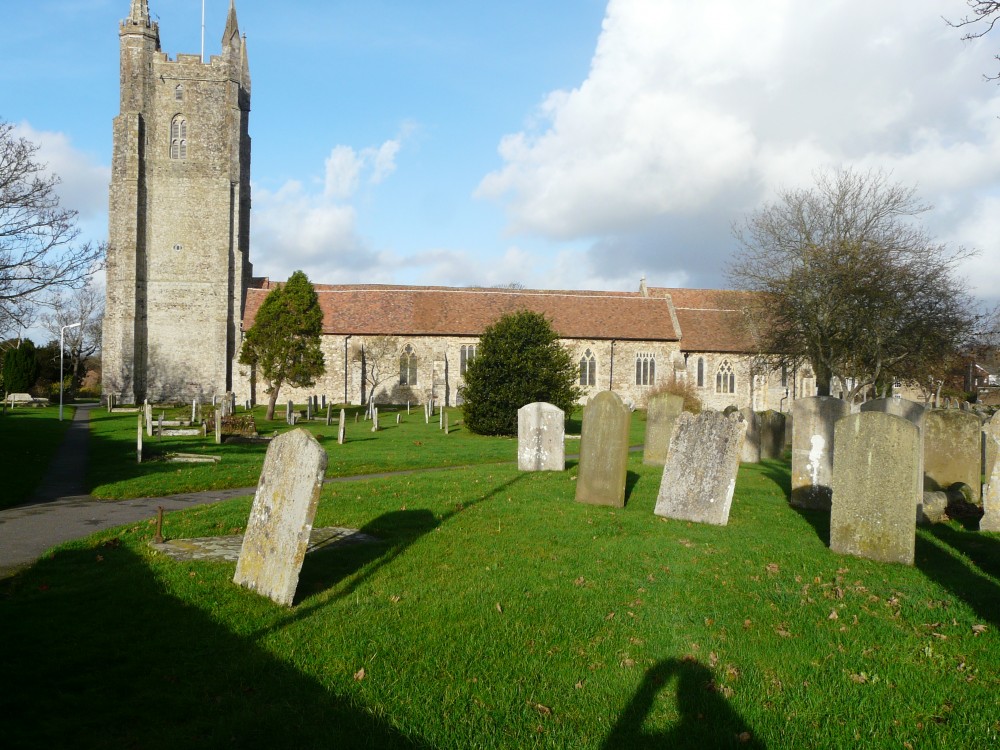Our Services
There is a service every Sunday at 10.30am. All are welcome. When there is a fifth Sunday, we have a Benefice Communion Service which moves around the benefice churches.. There is also a service of Holy Communion on the first and third Thursday each month. Please see the calendar for details.
History

All Saints Church, also known as Lydd Church, was long thought to be Saxon in origin, but recent studies have dated the oldest section to the latter half of the 5th century, making it Romano-British.
The church is thought to incorporate a small Romano-British basilica possibly built in the 5th century, though most of the current fabric is medieval. The small basilica had an apse, an arcade on the north side of three bays, and an elaborate porch on the west side. This is considerably different to Anglo-Saxon churches, leading to a Romano-British attribution.
All Saints is the longest parish church in Kent at 199 feet (61 m), and also has one of the tallest towers in the county at 132 feet (40 m). It was associated with local fraternities or guilds in the 15th century and could seat 1,000 people at a time. Severely damaged by World War II bombing, the church was subsequently restored and is now a Grade I listed building.
In the fifteenth century a number of Fraternities or Guilds of lay parishioners were connected with the church. Each of these fraternities held sevices in a different part of the church, either at a special altar of its patron saint, or before the image of that saint; and each fraternity maintained a light before the altar, or image, of its patron.
The Fraternities, in the fifteenth century, were those of the Holy Trinity, All Saints, St James, St Peter, St Mary, St Katherine, St John the Baptist, and St George. In the sixteenth century the following fraternities were added: St Barbara, St Anthony, St Mildred and St Nicholas.
The church registers for christenings and marriages began in 1542, and for burials in 1539.
The church interior was restored in the 18th century when box pews were replaced with oak pews to give a seating capacity of 1,000. The church was extensively damaged during World War II; the chancel was destroyed by a stray bomb, and the roofs and windows were badly damged. The church was re-built after the war in the early English style, removing the Victorian 'restoration' of the east end. The work was finally completed in 1958 after extensive fundraising.
Rectors include Thomas Wolsey (who later became Cardinal) though it is doubtful that he ever attended All Saints as he held a number of churches in plurality, employing a curate and keeping the tythes for himself.
There are eight bells in the tower, and they are rung from a room halfway up the tower. The largest bell, known as the Tenor, weighs over 15cwt.
The church became a Grade I listed building on 28 November 1950.
https://romneymarshchurches.org.uk/lydd/
See a 3D tour of the church here.
The church is usually open from 9.30am to 3.30pm. If access is needed at other times please contact the Churchwardens (below).
Church Officers
Churchwardens
Mike Botten: 01797 321615
Pat Carter 01797 320108
Location
All Saints, Lydd TN29 9DX
Charity Commission registration: 1146683